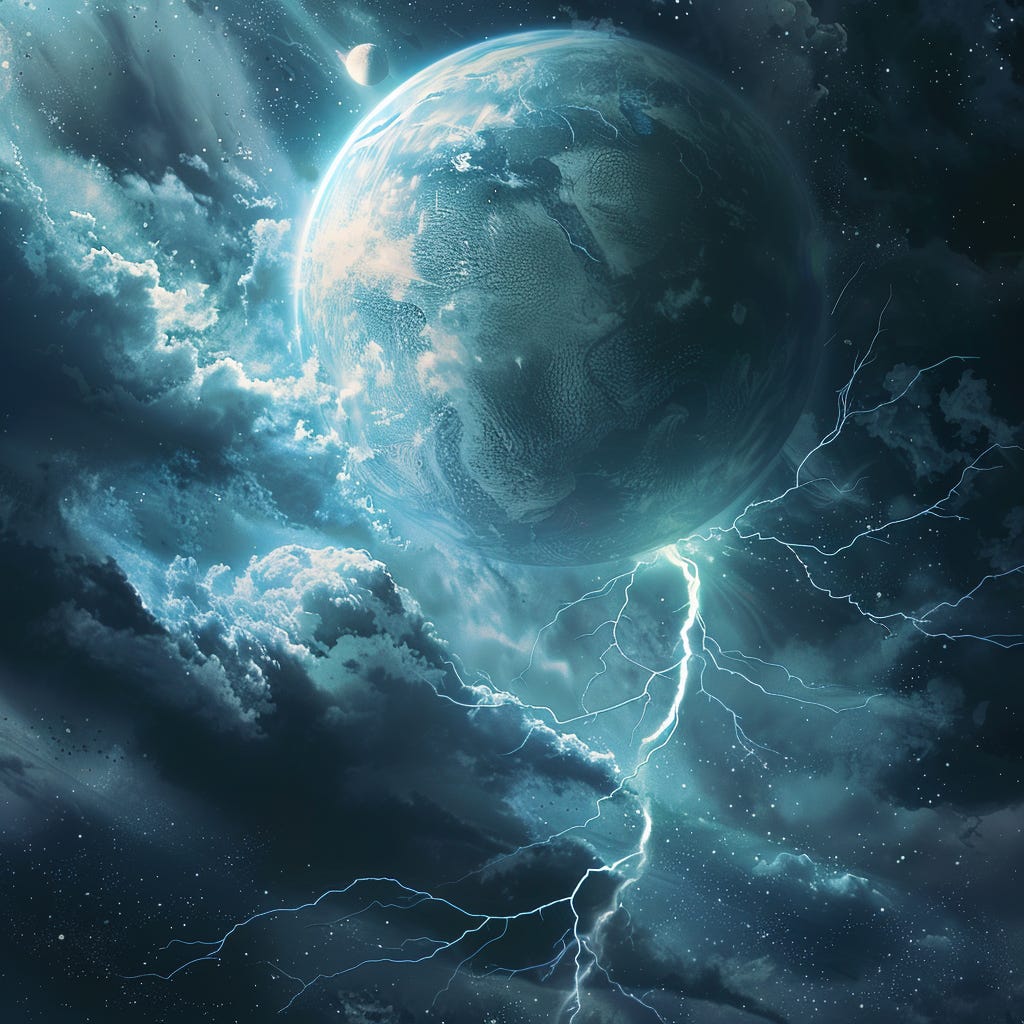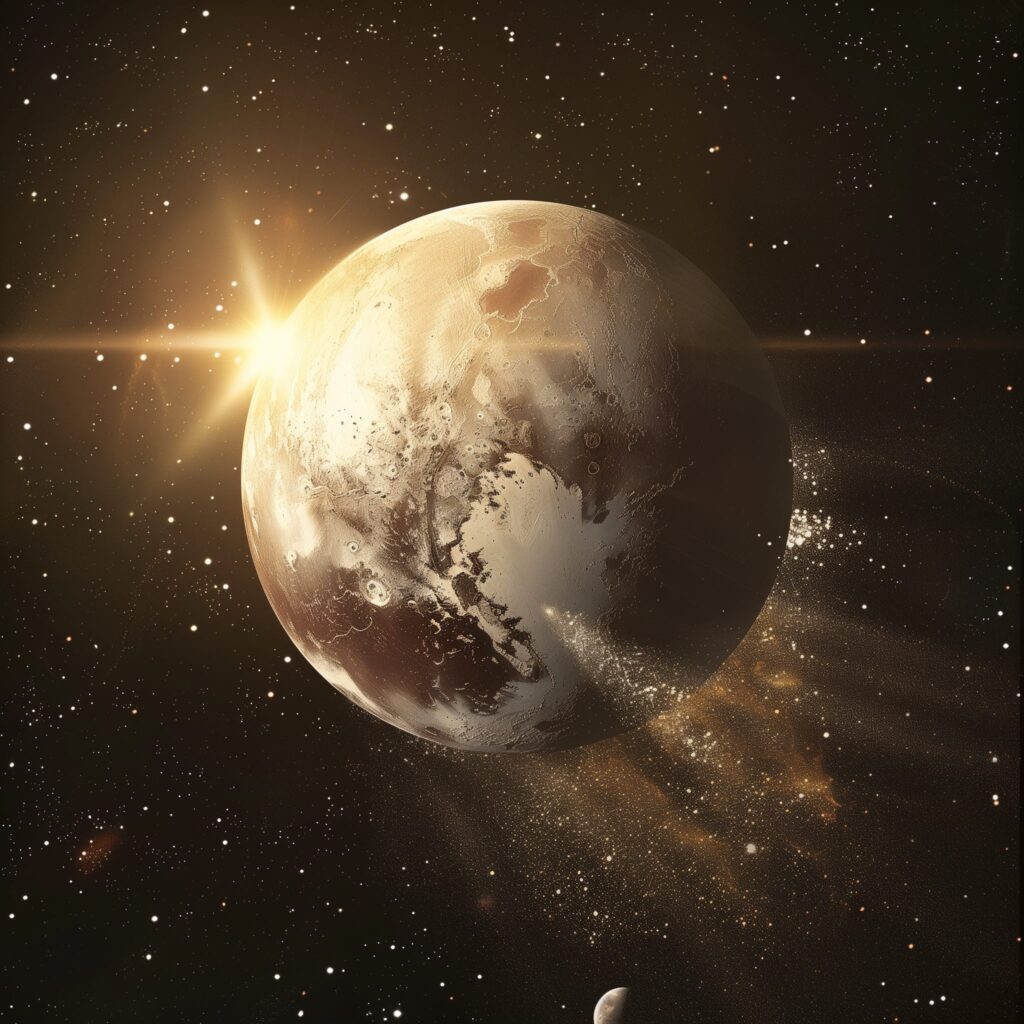Interruptions to the Inertia – Part 22 of The Chemistry of Time
The arrangement of time being a series of interplaying cycles prompts many to ask some of the oldest questions – those of the deterministic nature of the world and of life, of destiny and fortune, of fate or free will to act. If one observes these cycles from a high enough vantage point a degree of repetition or something quite like it, becomes inevitable. Jupiter and Saturn reliably meet every twenty years, Venus returns to similar positions every eight years, and each of the planets has a reliable and fixed orbit which assures they will eventually fall into similar places and relationships to each other after the passage of a sufficient number of these cycles. While no two moments ever have the precise same chart, sometimes we come across starkly similar arrangements which upon study produce starkly similar outcomes. This is where the wisdom that history doesn’t repeat, but it sometimes rhymes originates. This is what the curse those who cannot remember the past are condemned to repeat it refers to. Moments of time can and do frequently repeat in substantial ways, even in the duration of a lifetime, and we can find ourselves in disbelief when seeing the same damned thing happening in almost the exact same way. This phenomenon may go far to explain certain beliefs of ancient peoples who discerned this world to be a kind of trap from which they must escape, as well as the fashionably modern assertion that we live in a simulation.
You’re welcome to believe what you want – it doesn’t matter to me, I’m neither the boss of you nor responsible for your individual salvation – but in my years of life I have regularly observed actions of people which appear by all measure to be acts of free will. Often this is most visible in the worst choices a person makes. They seem to be on another trajectory and have objectively superior options, of which they are aware. They have demonstrated discernment and good decision making in the past, and they are generally capable of being responsible for themselves. And then they pursue the worst possible avenue, certain to ruin that which is working, and it does. These are not the cases where men fall to their knees and sternly reach out towards the sky, asking why for art thou condemning me to this cruel fate? The choices were clear and visible and made with open eyes, and the condemning party is not in question. More cheerfully, we can see the same in the best choices of people. Sometimes a person has gone along a certain way for many years until inspiration of some kind shakes them loose and pushes them into a way of being that seems wholly removed from the demonstrated past self, as if one day they vowed to do things differently and then simply did so. The ability to change – for the better or the worse – does exist and is quite common, but it does not appear to be available at all times. Seemingly out of nowhere a stormy wind blows through life and greatly disrupts what had come before. Some are crushed by the windy destruction while others are lifted over obstacles by it. It’s real, you have seen it, and probably it has happened to you. If it has, you know the same thing which I know – a choice was presented in those moments and there was a real possibility that it could have gone another way, and you yourself alone was the one who made the determination. Free will, it seems, lurks around many corners indeed.
The paradoxical question is always \”Can we determine from what a person is made of how they are likely to choose, thereby reinforcing fate as the determiner?” This sounds better in theory than it works in practice, so please feel free to prove that to yourself I have other things to do (fate does not require me to pursue endless threads which I deem a distraction). The superior question is “Why can people enact change at certain times but not at others?” This is also real and frequently present in life – think about changing a habit. Often a person is intellectually convinced and motivated to make a change and pursues it, but fails in some way. They try again, and fail again. A third time, and a fourth, but then on the fifth try it all seems to come into place and the habit is altered, often quite permanently. We usually rationalize our eventual success by some change in approach or new knowledge, and then far too many of us turn it into a life coaching gig, selling our solution to others because we have clearly overcome this great obstacle and can show you, too, how to do it! Maybe you can, but your customers will be subject to the same whims of time that you were. Showing them the light of your new approach sounds great, and so helpful, but the system tells us that is just the opposite approach that is in use in this world. To alter the path, the circuit, the inertia of the cycles, it is not shining a light upon it that allows us to pursue change rather it is the destruction of it that is necessary, by breaking apart the chemical bonds of the formula for time. This is the role of our solvents, or as I prefer to call them the Dark Luminaries.

In the Hellenistic era the only wandering stars were those which were visible in the night sky to the naked eye. These planets were Mercury, Mars, Venus, Jupiter, and Saturn. The large bodies which also rotate around our Sun that were discovered in much later centuries always existed, but were not readily visible until the development of new optical methods (Uranus is sometimes visible and was likely seen but not by the Greeks). Neptune, Uranus, and Pluto are not part of the astrological system as known to the ancient Greeks, Babylonians, Egyptians, or Indians. The system is a tightly-integrated and elegant interpolation of forces which constantly refer to each other and as such there is no possibility to integrate three additional solar system objects into it in the same way. Efforts were made to do so in the 20th Century, assigning the modern rulerships, but that was an arbitrary action done by people who did not have access to the full system that has been rediscovered in our present era. It can be said definitively that there is no systematic basis for this and I consider that to be conclusive. The other work done in the modern period concerning these planets – the observing of their apparent impacts via transit – is of much greater utility and thus far stands the test of time.
The actions of Uranus and Neptune have been observed for over two centuries and Pluto for a single century. This time period encompasses the full lives of many practicing astrologers and provides more than adequate data to draw some conclusions about their impacts on the calendar. Remarkably, it took relatively little time to discern the primary modes of each and those early determinations have proven consistently useful to an extent that allows us to say there is a consensus on their fundamental impacts to the formula of a time. All three are shown to be less sophisticated than the wandering stars, which would follow given their non-fundamental status to the system. Rather they seem to work more like supercharged fixed stars – those “non-moving” objects in the sky which are usually minor considerations but which have the occasional tendency of being extremely relevant when in tight configuration to the wandering stars. The key distinction between the new “outer planets” and the fixed stars is that these outer planets also wander. This places them in a structurally special class and provides a theoretical basis for treating them like a combination of wandering and fixed stars, and this is also exactly how they appear to behave.
Despite two and a half centuries of observation and nearly three full zodiacal cycles of its orbit, the behavior of Uranus is not observed to be especially complex. It does not require full texts and keyword studies and rulership to describe its actions. Uranus is simply known to disrupt things. It disrupts things in a shocking manner, in that it appears to act suddenly, reminiscent of a bolt of lightning. Finally it is notorious for being unpredictable, something that becomes more true the more time you spend trying to predict what results it will produce. It is also generally seen to be malefic, which usually means people do not like what Uranus leads to. It shares this last trait with Pluto and Neptune.

Neptune has been watched astrologically for approaching two centuries, including a full orbital period through each sign. Neptune is known to dissolve things. It does this by muddying your view, casting a fog over the things it interacts with. Where Neptune is, things are not what they appear, and what appeared invariably dissipates.

Pluto has just under a century of study but very quickly revealed its elemental nature to astrology watchers. It blows things up. This is both figurative and literal. Where you find Pluto you will find exaggeration. Pluto will give the full extent of whatever it interacts with, good, bad, and ugly. Where Pluto treads, things are a lot more extreme.
Despite their different modes of action, all three accomplish more or less the same thing – they are destroyers. Uranus will zap things out of the blue, Neptune will slowly dissolve them into nothing, and Pluto will blow them up until they burst. In each case, you’re left with destruction. These planets are primarily active when they are aspecting other planets, in that they take whatever is going on with the other planet and apply their special way of doing things to it. In this way they are taking the existing elemental formula being created by the seven wandering stars and applying a solvent to that, breaking the elemental bonds of what otherwise would be in the absence of this aspect. The effect is like a stress test – only that which is structural or essential withstands the application of the solvent. They shine their peculiar brand of light by taking away and leaving a void. The dark luminaries thus create opportunity where there was once inertia, momentum, or rigidity, and it is in these times when choices can be made, and when choices must be made.
To take action is a choice but not taking action is also a choice, given the opportunity. The outer planets combine with the active elements to create moments of time where we can change course because whatever has been up until that moment is being dissolved, disrupted, and blown up by the interaction of the solvent. They are most noticeable when interacting closely with other planets but they are always lurking somewhere in the background, beyond our visibility, playing a rhythm all their own in the empty spaces between the notes and the tones.

Leave a Reply